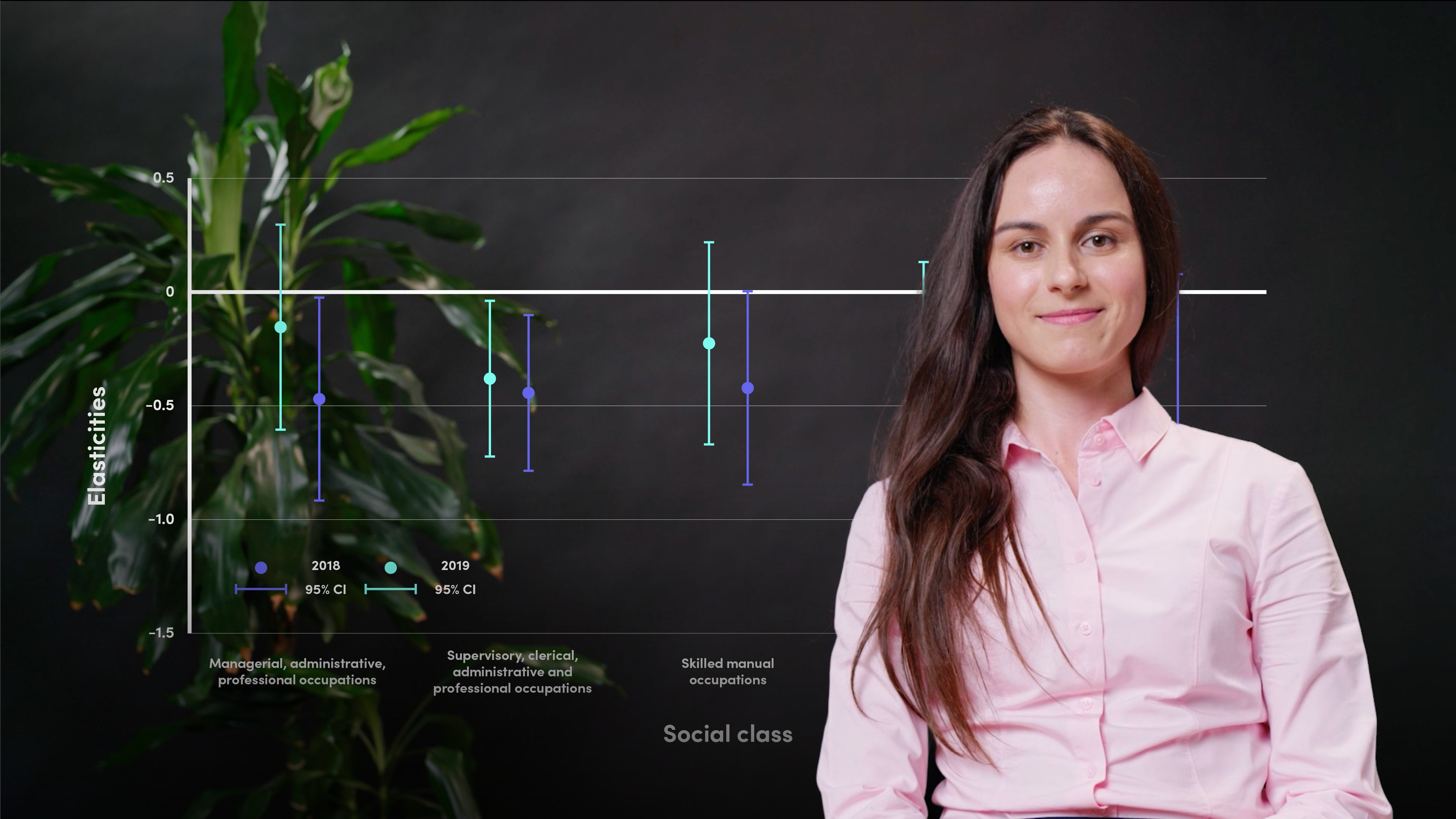
What is Demand Elasticity and Why is it Important?

Larissa Marioni
10 years: Macro Economist
In this video, Larissa Marioni discusses the concept of price elasticity of food and drinks and explains why we need to understand different elasticities of demand. She also provides detail around the hypothesis of the research and the findings.
In this video, Larissa Marioni discusses the concept of price elasticity of food and drinks and explains why we need to understand different elasticities of demand. She also provides detail around the hypothesis of the research and the findings.
In the ever changing macroeconomic environment, it is always important to understand the drivers of prices of different food and drink items, as they affect our consumption habits and thereby our long-term health. It is even more crucial to understand what this means in today’s world with rising costs of living as food inflation can have detrimental effects on low and middle-income households.
Key learning objectives:
Understand why we need to estimate different elasticities of demand
Understand what each of the demand side definitions means
Outline the findings of the research and its implications
Now free to watch
This video is now available for free. It is also part of a premium, accredited video course. Sign up for a 7-day free trial to watch more.
Why do we need to understand and estimate the different demand side elasticities?
Estimating the price elasticity of demand for an individual item of food or drink allows us to assess how demand for it varies when its price changes (own-price elasticity). Estimating a demand system for all food items allows us to assess how demand for various items changes, not just in response to their own prices but also in response to changes in prices of other items (cross-price elasticity). Expenditure elasticity measures how demand for individual food items varies with changes in consumers’ overall expenditure on food, as consumers on low income might have different patterns from those on high incomes. Nutrient elasticities are also calculated. As changes in prices or income lead consumers to adjust their pattern of consumption, those adjustments affect nutritional intake.
Demand elasticity estimates enable policy-makers to anticipate the likely effect of food price inflation on patterns of consumption and nutrition. Sharp price may lead consumers to switch to cheaper and unhealthier products leading to decline in long term health. INSeveral government policies have recently looked to alter peoples’ eating behaviour in the last decade.
What were the findings and observations from the research on the different elasticities?
- Own-price elasticity of demand for most products is found to be negative but the sensitivity varies across products. For example, consumers’ price responsiveness is high for alcohol and price sensitivity is also high for categories such as frozen confectionery, savoury home cooking, and take-home savouries
- Recent supply-chain shocks have led to unpredictable changes in consumer behaviour, and it is unclear if we will regain pre-pandemic stability
- Price sensitivities differ across socio-demographic groups. Demand for alcohol is very sensitive to household income and as income increases, the demand for alcohol increases more than proportionately, which would lead alcohol to be classified as a ‘luxury’ good. In contrast, consumption of dairy products does not vary as much with incomes, fitting the standard description of ‘necessities’
- Estimating cross-price elasticities shows a small but complementary relationship between a range of goods that are relatively high in sugar. For instance, when the price of take-home confectionery increases there is a reduction in demand for several products, such as biscuits, chilled bakery products, frozen confectionery and take-home soft drinks, all goods that are also relatively high in sugar. We also find that demand for dairy products is generally invariant to the price of other products
- The research also considered hypothetical taxes on a range of food and drink groups that have a high sugar, salt or saturated fat content, as there is a growing policy concern that foods that are high in these nutrients contribute to health problems. It was found that the impact of a tax will depend on how consumers substitute between products of different nutrients composition. Txing a specific product will only have beneficial effects on nutrition choices if customers change their consumption habits towards healthier products
Now free to watch
This video is now available for free. It is also part of a premium, accredited video course. Sign up for a 7-day free trial to watch more.

Larissa Marioni
There are no available videos from "Larissa Marioni"






















